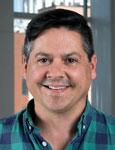At the 2014 Governor’s Conference on Economic Development, UW–Madison School of Business economist Morris Davis raised the alarm about our “massive brain drain” problem in Wisconsin. In his presentation at the conference, and in subsequent media appearances since then, Davis described how from 2008 to 2012 Wisconsin lost 60,000 college graduates, most of whom were between the ages of 21 to 29. While some of these people moved to nearby urban areas like Chicago or Minneapolis, many moved out of the Midwest entirely.
“You might say, Well, they’ll come back. [But] they don’t come back,” said Davis, adding, “I don’t think that’s good for the state.”
The problem of brain drain—a relatively nonspecific term used to describe the flight of educated people from a distinct geographic area—isn’t new to our state (or any others in the Midwest for that matter). According to Jeff Sachse, a labor economist with the Wisconsin Department of Workforce Development, we’ve been trying to address the problem since the 1990s through various economic incentives and student retention initiatives.
But what’s different today says Sachse is that the carrot of a stable, long-term career in Wisconsin is no longer adequate enticement. “Quality of life issues are increasingly important for young professionals and new college graduates,” he says, and, as such, these issues need to be incorporated in any strategy to address brain drain.
Step One to any good strategy is getting to know the players, and the brains draining from our state happen to belong to the Millennial Generation, those young professionals and new college graduates born between roughly 1980 and 2000. At 80 million strong—roughly 27% of the US population—Millennials are not only the largest age cohort, they are also the highest educated and most racially diverse in American history, according to the US Census Bureau.
Born into the era of the Internet and Big Data, the Millennials are also the most-studied generation in American history. Indeed, study after study—probably the most important of which is the Pew Research Center’s Millennials: A Portrait of Generation Next—reflect the central themes at work in the Millennial character: digitally connected, confident, self-expressive, socially liberal, upbeat, and open to change. And, while no group of 80 million people can be considered homogenous, studies suggest that these character traits drive Millennial desires for their lives, careers, and families.
Much has been written and said about the Millennials—some of it flattering, much of it disparaging. But I would remind readers that rarely has an older generation sought to point out the better qualities of a younger one (think of what your forebears said of your generation and you will know what I mean).
While I’m not an expert in understanding the “Millennial mindset,” I do think it is important that I and others my age and older make an effort to try to get to know the Millennials if we truly want to court and retain their best and brightest in our beloved state.
I bring this up because there was also something else that Davis said at the conference that caught my attention. He noted that, even though the state’s population is rising about 0.5 percent a year, most of the growth is in people age 65 or older.
It’s true: Wisconsin, like my hair, is rapidly graying. While older people are indeed migrating into the state, the elderly population is becoming proportionately larger as more and more young people leave.
The Wisconsin Applied Population Lab at University of Wisconsin–Madison reports that by 2020, 24% of the state will be age 60 and older; by 2030, more than 27% will be 60-plus. Projections from the Wisconsin Department of Health Services also reflect this trend, with a so-called “aging boom” concentrating the population of retirees in many northern and north-central counties as younger people depart, thereby placing further pressure on communities already suffering from a lack of smart, young doctors, teachers, public servants, and other civic and business leaders.
It appears that we are heading for a perfect storm: a “brain drain” vortex exacerbated by an “aging boom” with massive implications for both high- and low-tech industry, municipal and public services, even state and local tax bases.
Millennials, then, might just be the proverbial shelter from the storm.
Let’s return to what Sasche said about “quality of life issues.” While a largely objective concept, many quality of life indicators revolve around larger, more interconnected things, the things that, well, make life worth living: good schools and safe neighborhoods, opportunities for lifelong education and meaningful encounters with the arts and culture, a healthy natural environment, and a fair and equitable community in which to pursue one’s dreams and goals. The character traits of Millennials point to the pursuit of this higher quality of life. And they are willing to move somewhere to find it.
So, talk to a Millennial. Try to understand what makes them tick. Better yet, ask them to stay in Wisconsin. Retention policies and economic incentives aren’t going to cut it. We—Boomers, Gen Xers, and Millennials—will have to work together to cultivate an environment that will attract and keep smart young people in our state today. And, perhaps in doing so, we’ll find new ways to invigorate the economy of tomorrow.




